Google Trends for Digital Marketers and Business
By Intern |4 Dec 2015
Google Trends is an extremely useful tool for both digital marketers and business owners. The tool provides valuable insight into the relative popularity and interest in search terms/topics over a period of time. It also provides information about the location of searchers and the types of search that people use (image, video, news articles, and web).
This data is extremely valuable when used to plan content and digital marketing activity, providing an understanding of topics that are current, relevant and popular. This is imperative for the effectiveness of any digital marketing campaign.
Understanding where trends are and when they occur is important for ensuring campaigns are targeted at the correct people in the relevant location and at the optimal time.
The accuracy of Google Trends data
Here's data on Volkswagen's new and old CEOs Matthias Muller and Martin Winterkorn:
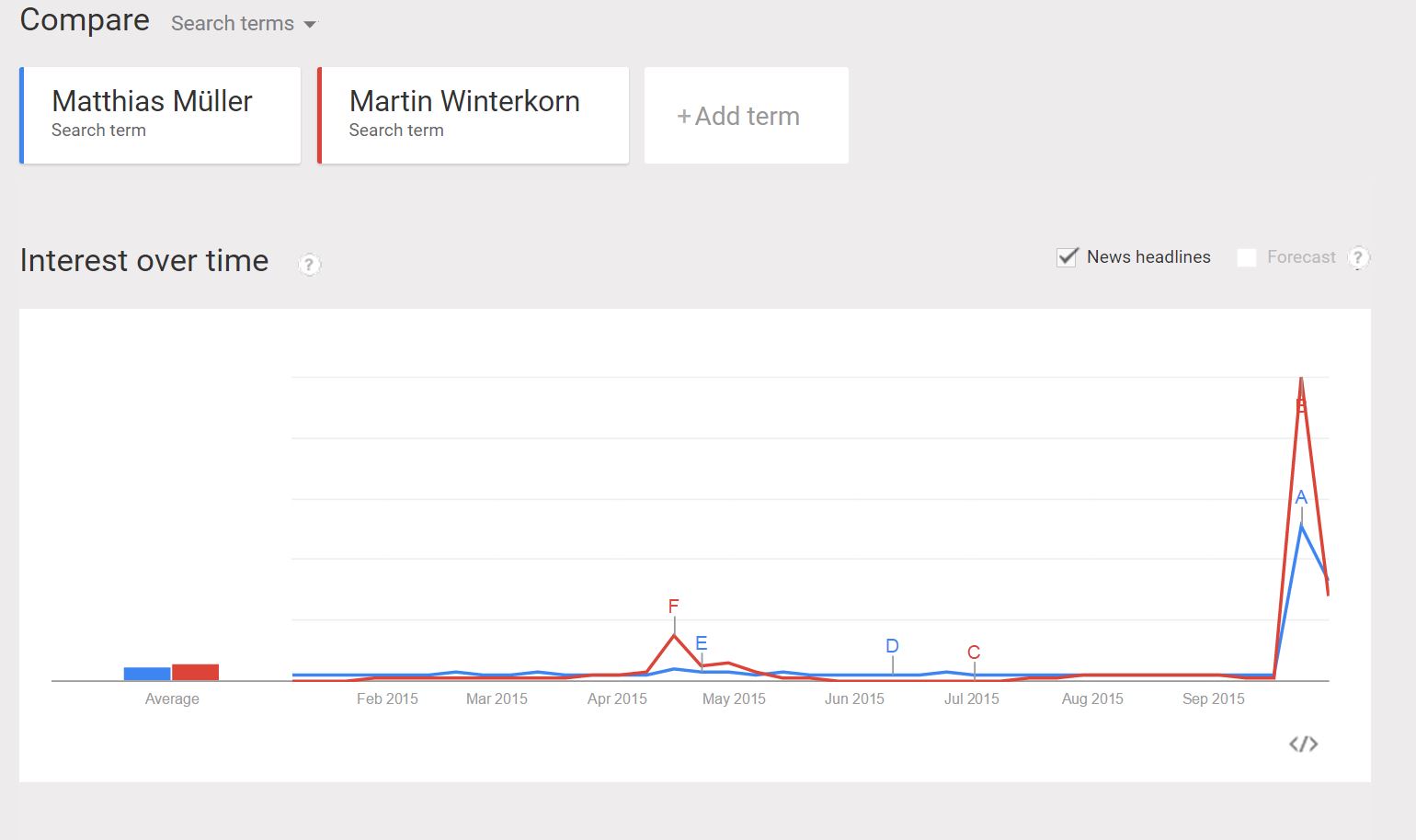
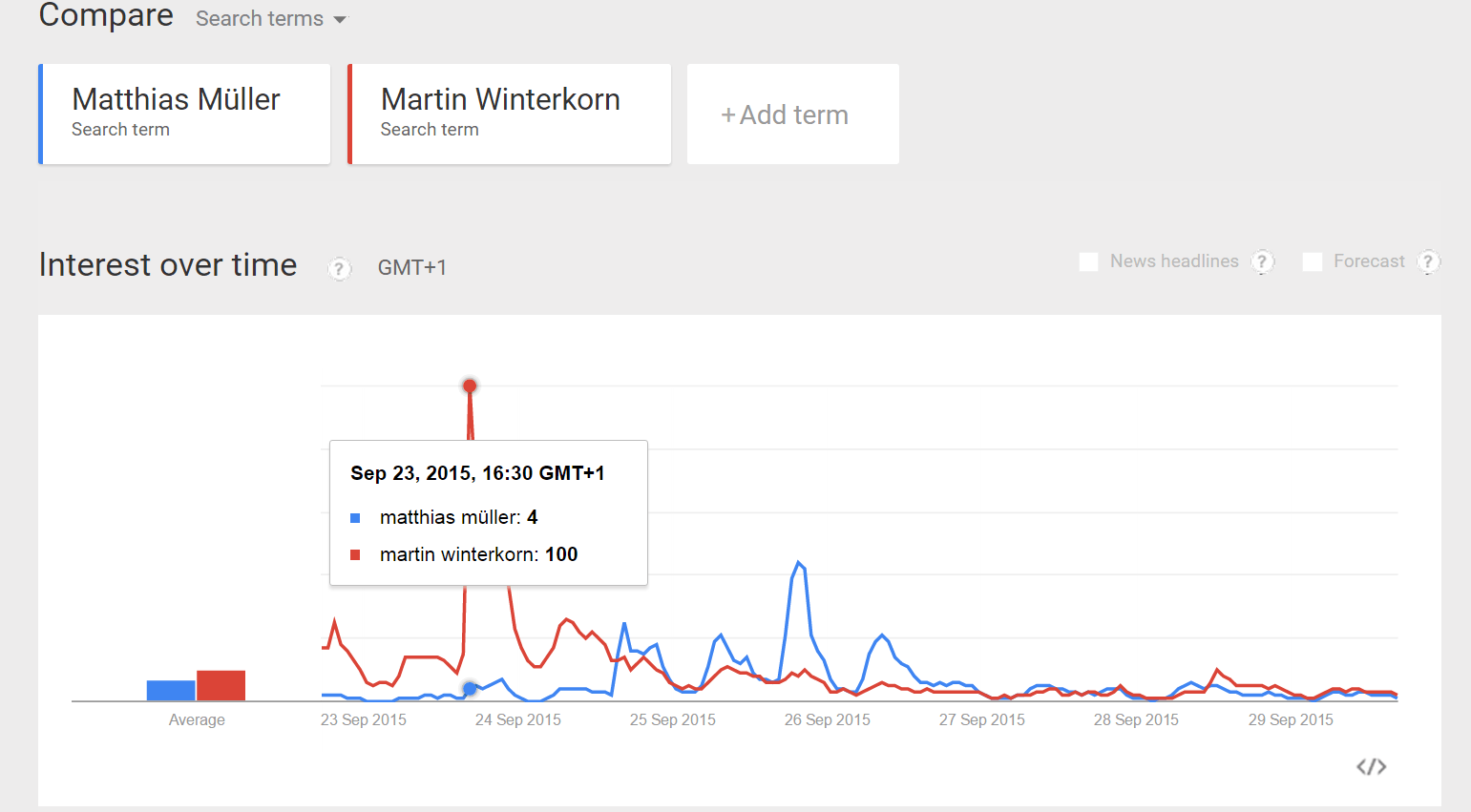
The correlation between news articles, blogs, searches on the subject of Volkswagen’s new and old CEO and the report shown shows the accuracy of Google Trends down to the day, and even hour, of an event happening.
Google Trends has a useful feature that overlays news headlines from authoritative sources, this provides insight and context into why a topic has spiked in interest, see below.
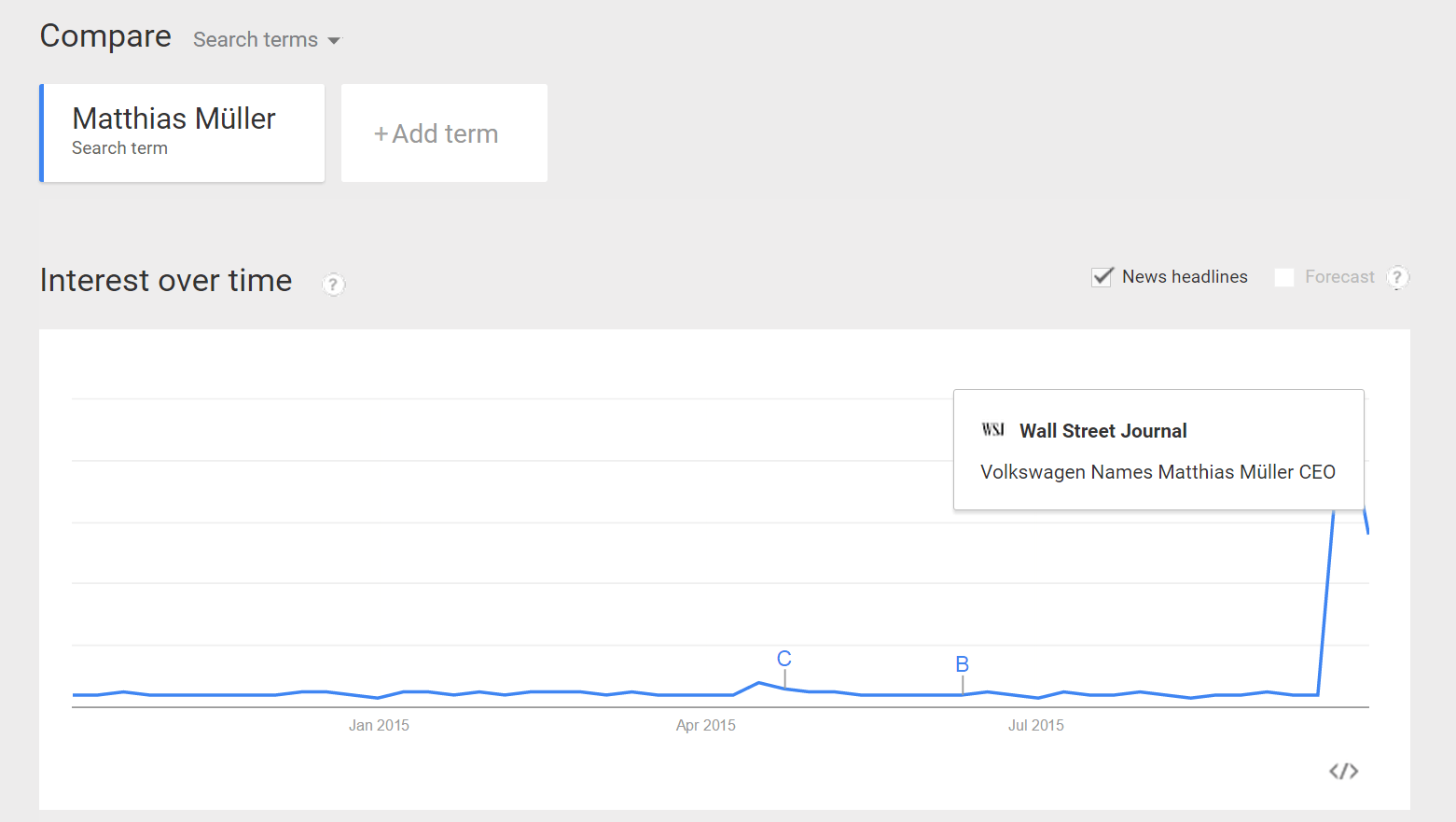
Google trends is also accurate with the location of search trends. For example, the chart below reflects the national interest in the term ‘Matthias Müller’.
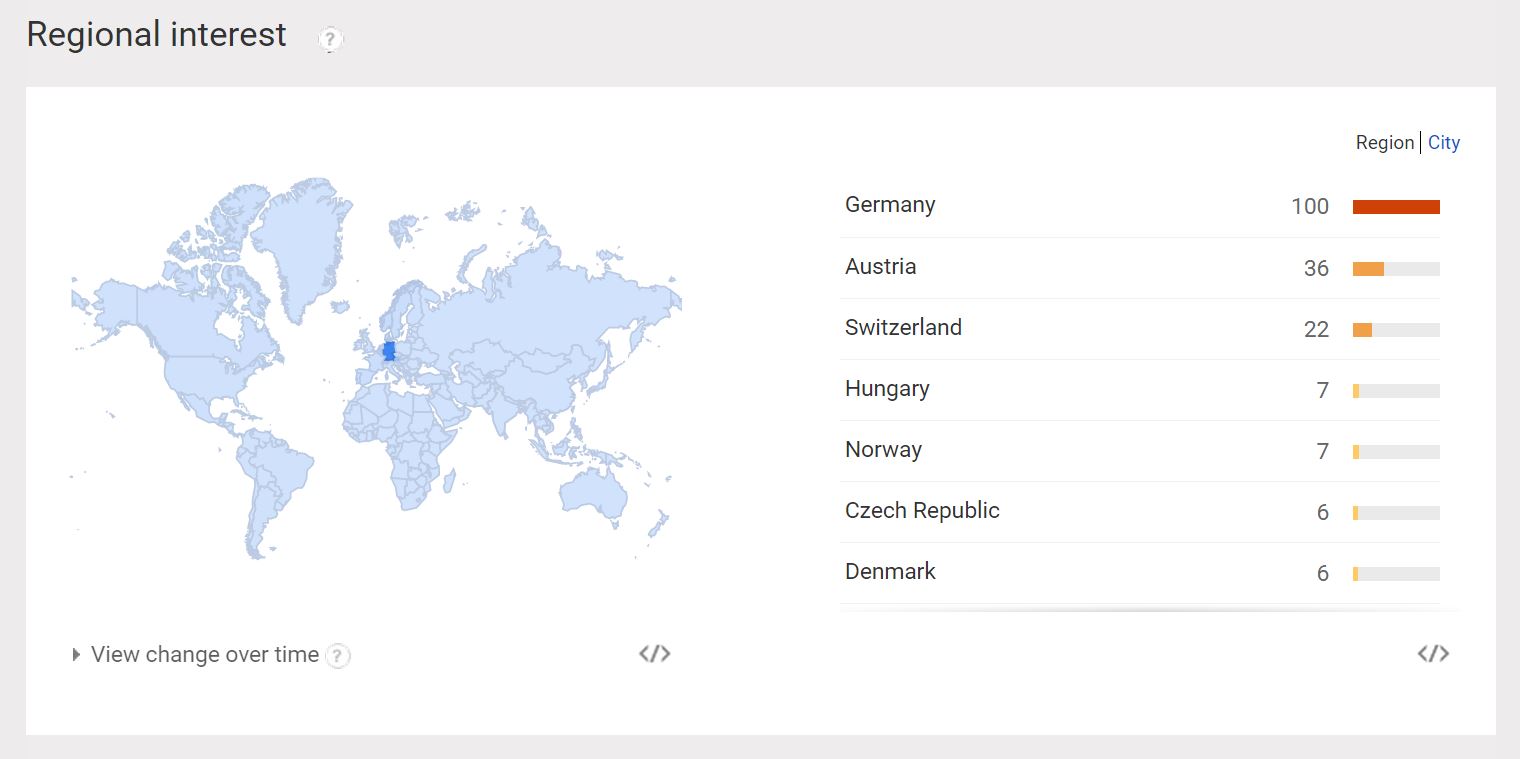
Category trends
Another facet of the tool is that trending story data across categories is available, and updated in real time. These include:
- Health
- Business
- Entertainment
- Sci/Tech
- Sports
- Top stories
So, as an example, a business owner/digital marker working in the science and technology sector can review the trending topics in the sci/tech category, as shown below:
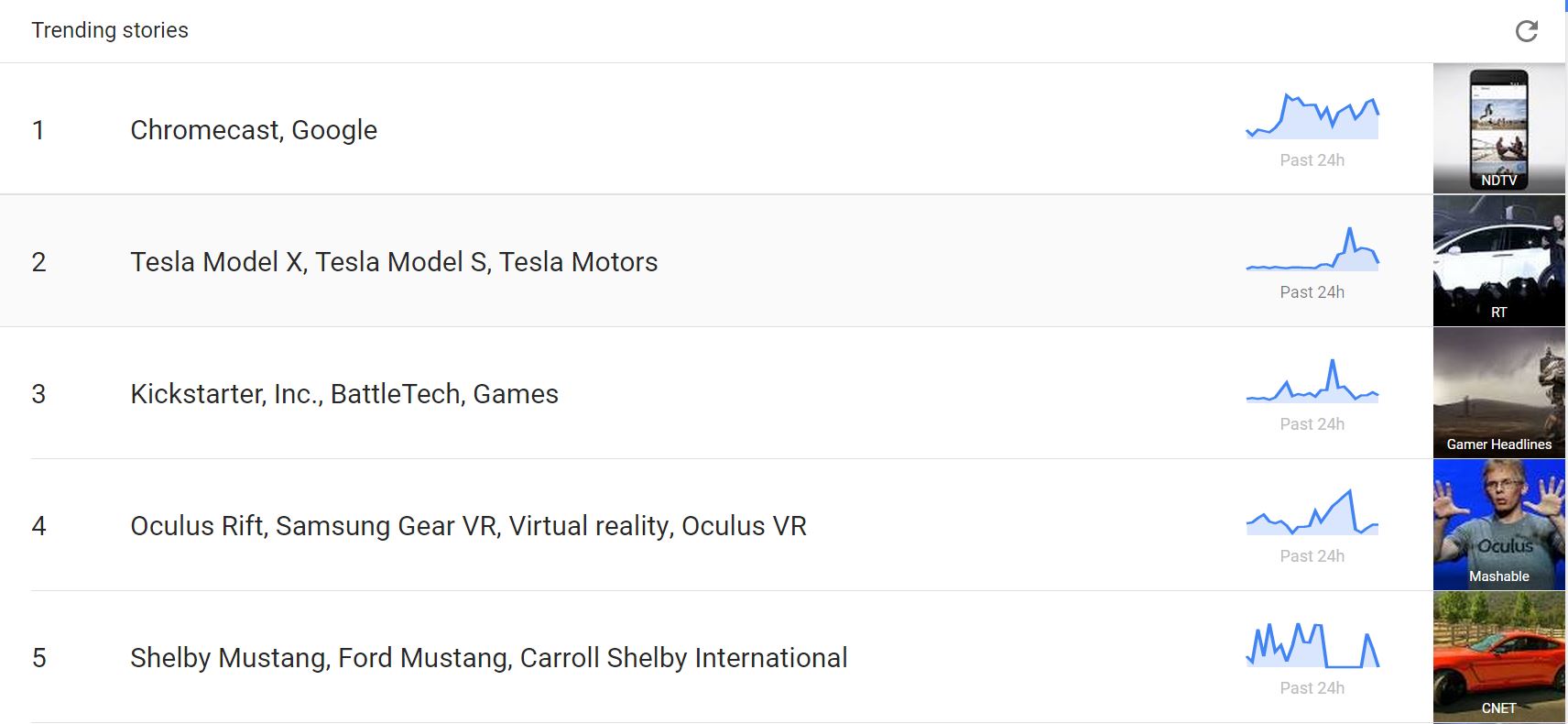
And if we look at the interest over time in Google’s Chromecast, it shows a spike because of the release of a new product, as indicated by the Trending stories image above.

The interest over time graph above is useful in showing if there is a continued interest in the topic, and not just a spike for a few hours. With this example there is clear continued interest after the event, meaning it is still worthwhile writing about the topic, even if you missed the initial news of the products release.
To refine our publishing further lets see where this is trending and perhaps target locations with the most interest in the topic.
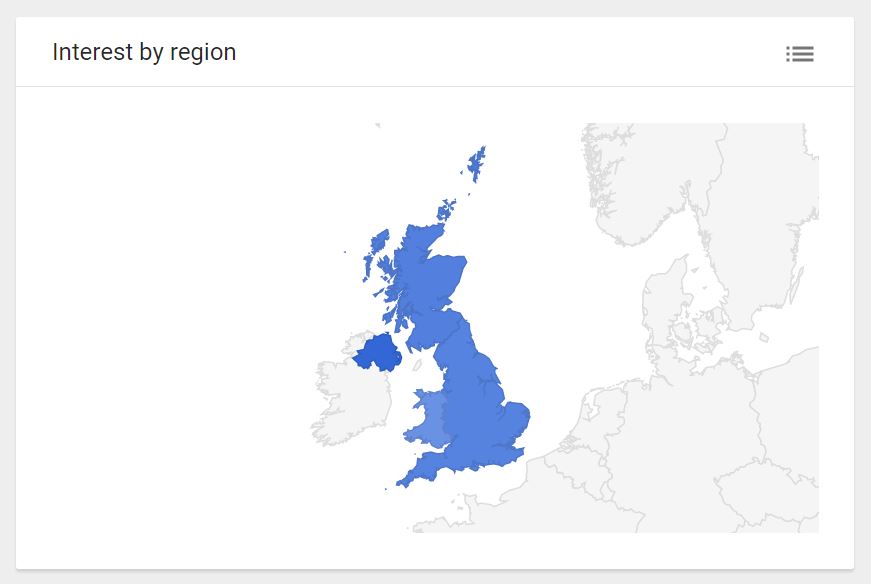
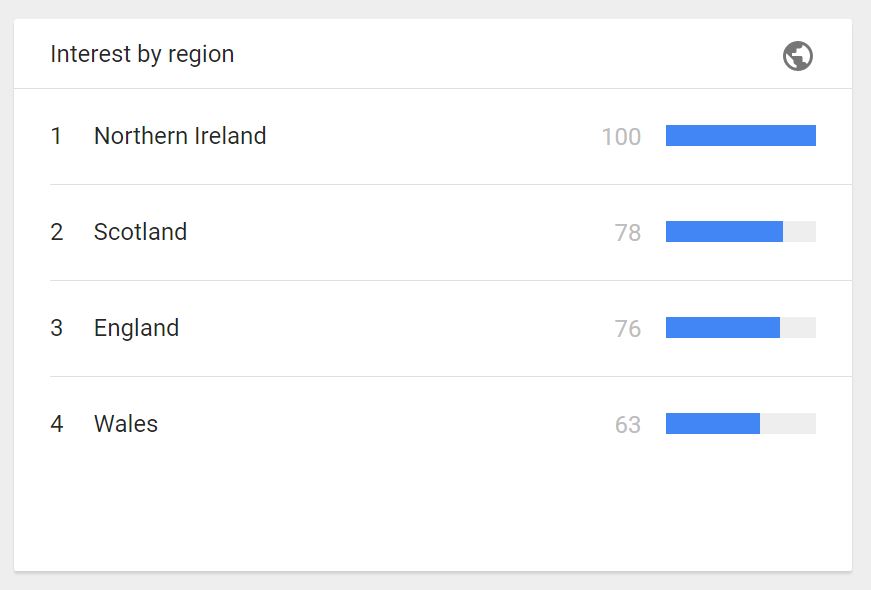
Here we can see this topic is most popular in Northern Ireland, and less so in Wales. So now we know this content is most likely to be successful if promotion of it is targeted in Northern Ireland, perhaps with paid activity related to the content.
Related topics
Other data we can use to help with content ideas is the related topics and trending queries.

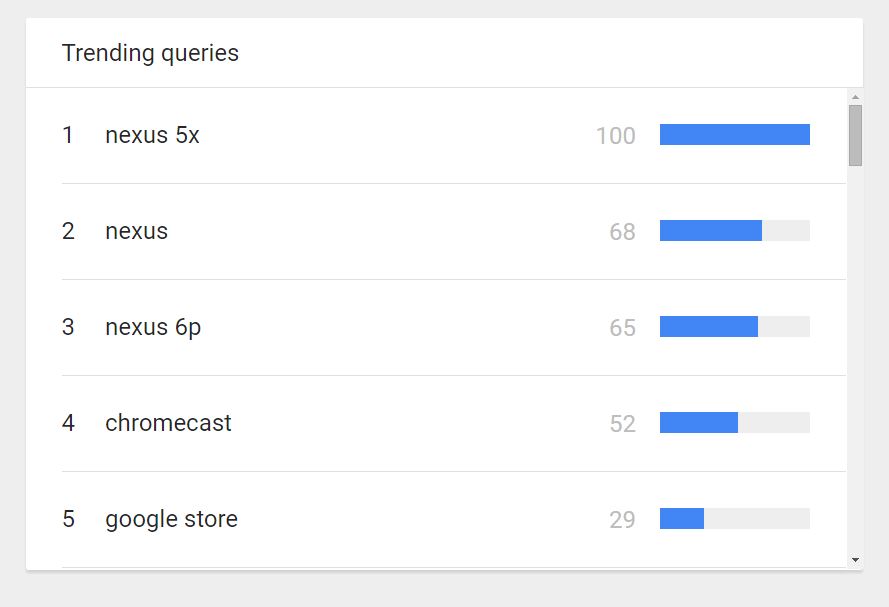
These can be useful for sparking new ideas for content that might not have yet been thought of. Related topics can also be used for writing supporting content for the original piece.
Google Trends provides a very useful ‘rising searches’ feature, which is valuable when planning content for the right audience, at the right time.
Rising terms are those which have also been searched for the term entered, and that have had the most growth in search volume within the time frame specified. The percentage growth of the term is also reported and compared to the previous time period.
The following are rising search terms for the term “apple” in the UK, over the past seven days.
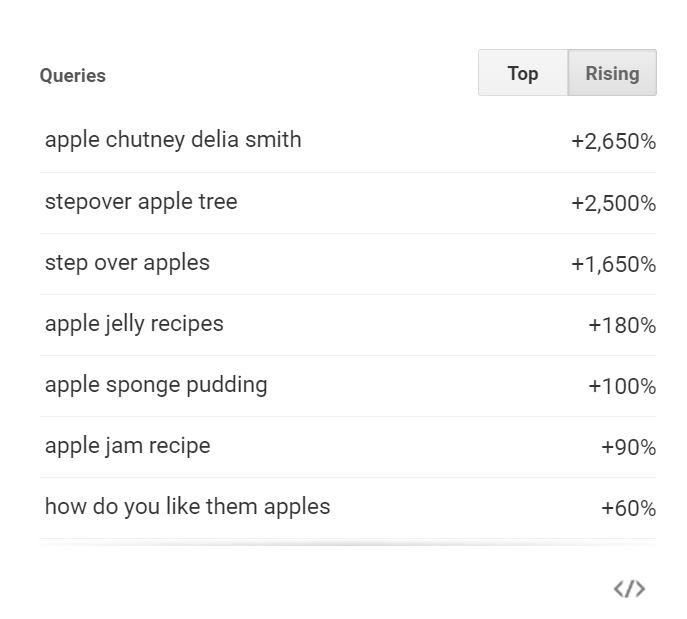
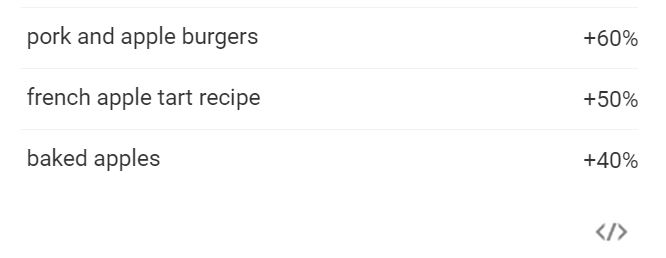
These rising terms i.e. ‘pork and apple burgers’ or ‘French apple tart recipe’ are worth their weight in gold if you were struggling to come up with content ideas and opportunities around cooking with apples, in this instance, and that are popular right now. If executed correctly and quickly your content will be the most relevant for this intent at its peak.
It is all about timing, and ensuring you are not too late to react to what is rising, and so face an overly competitive market. The term “Breakout” will appear instead of percentage growth if the search term has grown more than 5000%, Indicated a significant interest in this topic.
Product & Market research
Google Trends can be used to provide valuable market and product insight, without the additional cost traditional market research carries with it. This insight can be incredible valuable for local businesses that may have limited budget to spend on product research.
For example, a retailer specialising in selling laptops can review the popularity of laptop manufacturers to assist in deciding which manufacturers are in higher demand by customers and then prioritise which manufactures to stock.
In order to gather the most accurate and actionable data here categories can be applied to filter down to your target audience, in the example below the UK has been chosen as a location and Computers & Electronics as a category.
Data here has been looked at for the previous 12 months to gain an average view of customer demand, however this can be changed to view data by a business’s peak months, for example Christmas. The peak in interest in Lenovo and HP laptops around the end of November and into December indicates these are in higher demand for the Christmas period than Samsung, Sony or Dell laptops.
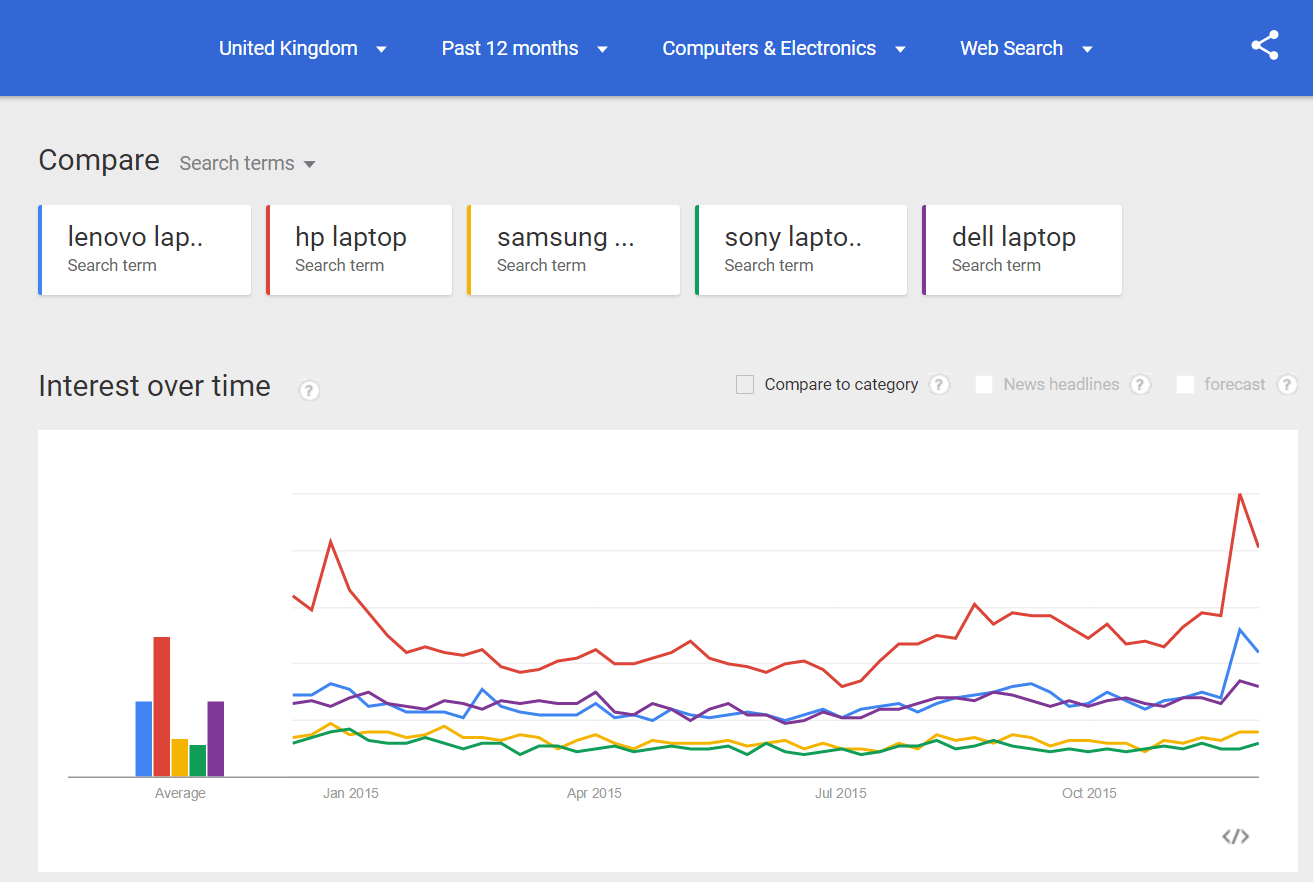
Now it is clear HP laptops are in higher demand than any others, we can view which areas in the UK HP laptops are in most demand. This can be used to target these locations through paid activity online ensuring budget is spent as effectively as possible.
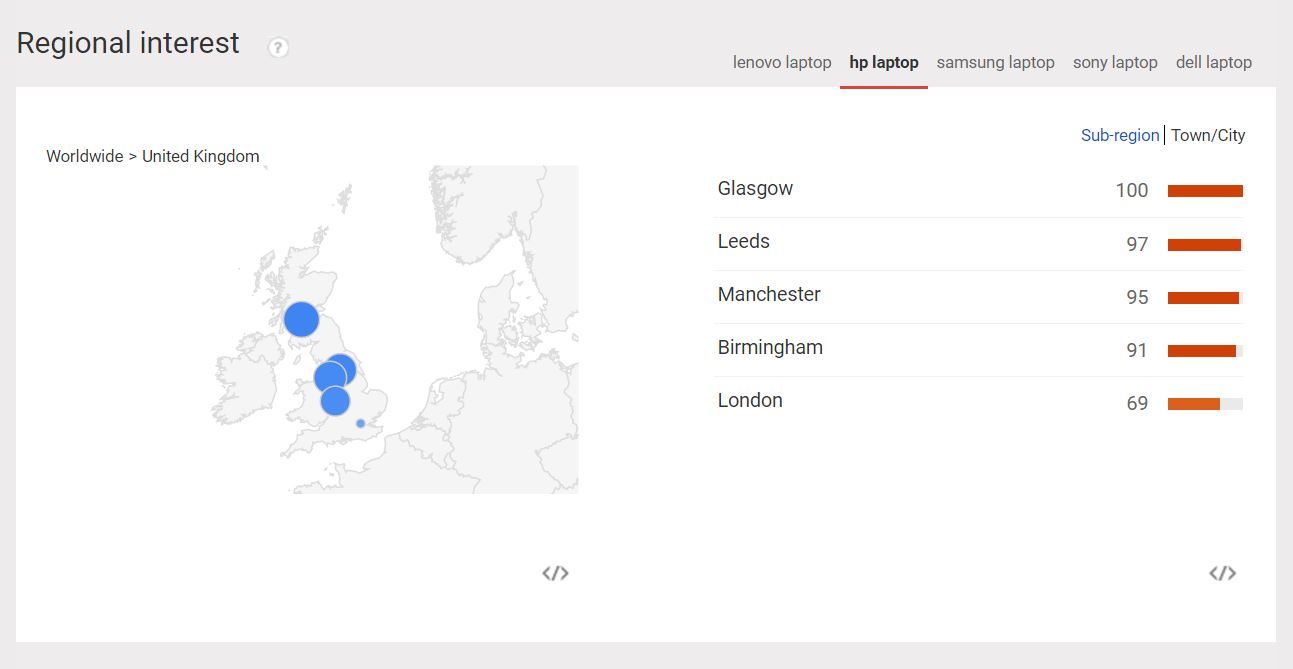
It is then a good idea to review related searches for a manufactures product as this will help further identify customer demand. In the example below it is clear HP Pavilion laptops are in higher demand than Envy laptops, allowing businesses to make a highly informed decision that this is the appropriate product to stock.
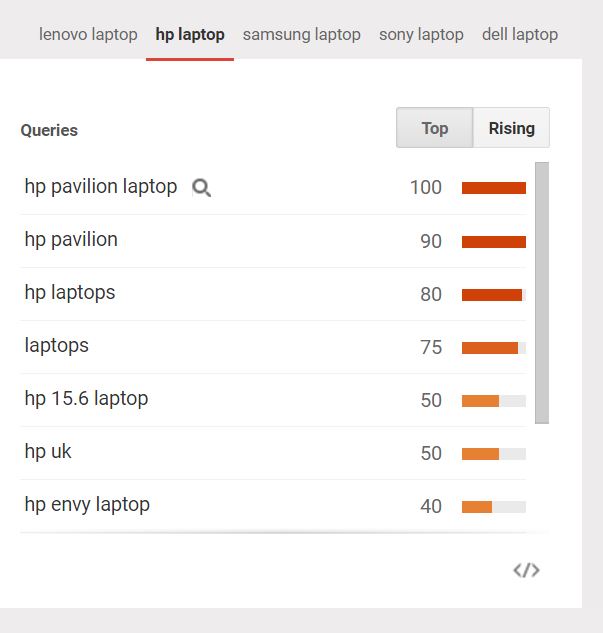
Seasonal trends
A simple example below is the seasonal trend in the term winter clothes compared with the term summer clothes. As expected there is a correlation between the popularity of winter clothes during winter months and summer clothes during summer months.
Following on from product research, Google trends is a useful tool in managing the expectations for clients and business owners. Seasonal fluctuations often correlate and effect levels of traffic and conversions on a site.
It is often the case, if no other factors have had an effect, that a client will see drops in traffic to sections of the site due to seasonal trends, Google trends can be used to show the change in demand of a customer over time.
A basic example of this is the trend in hats, scarves and gloves in the UK, which as expected all rise during winter months and bottoms out in the summer months.
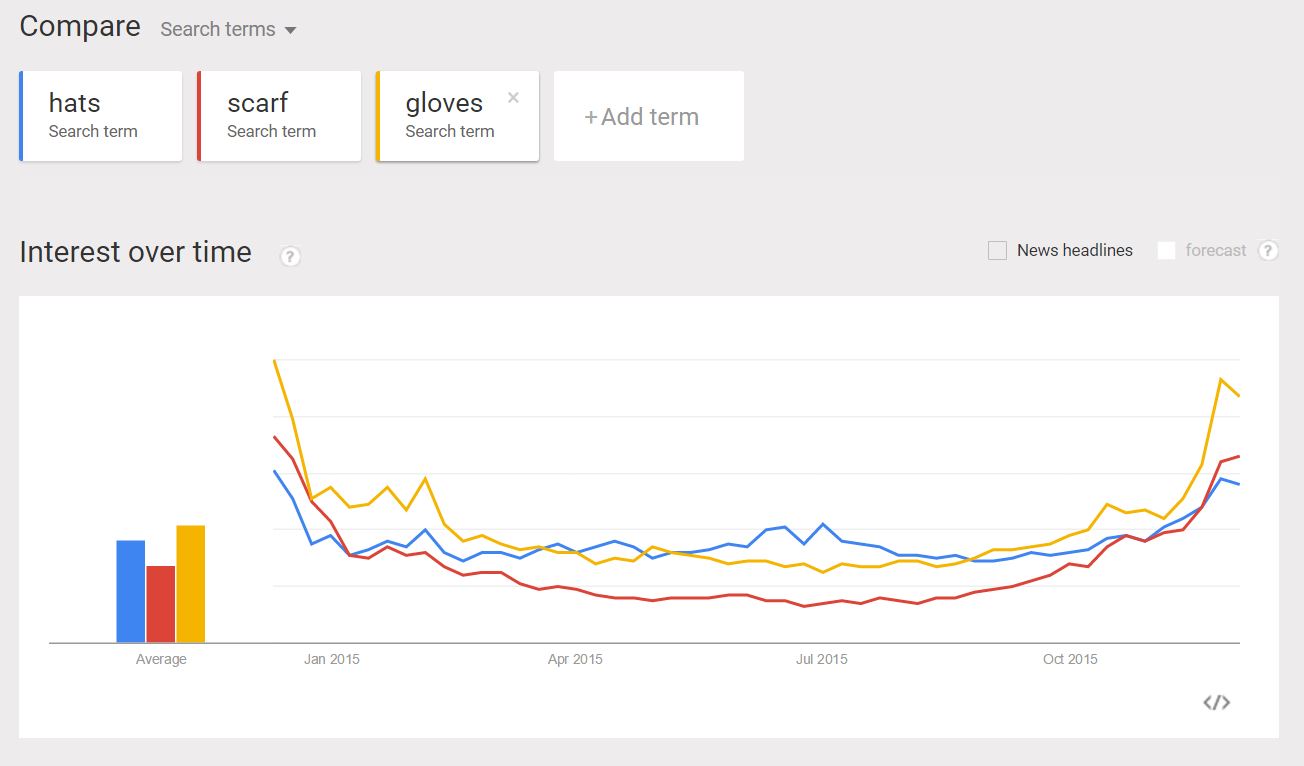
This is where Google Trends is a useful tool in showing customer demand for products and how these will changes over time, and the importance to in being prepared for these changes as and when they happen.
Overall Google trends is an invaluable resource for all digital marketers and business owners, and should always be used when planning campaigns or helping to inform business decisions. Using Google trends on a regular basis to do this will ensure you keep up to date on what is currently relevant and what resonates exactly with your audience, and at the correct time.
Looking for expert advice about all things digital, or using Google Trends? We‘re happy to help! Contact us today.